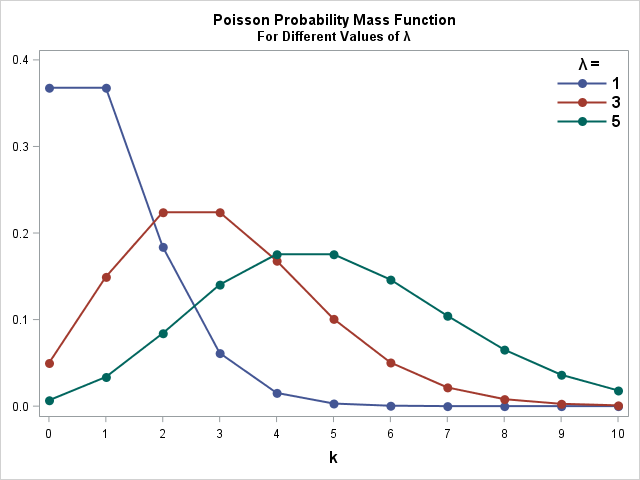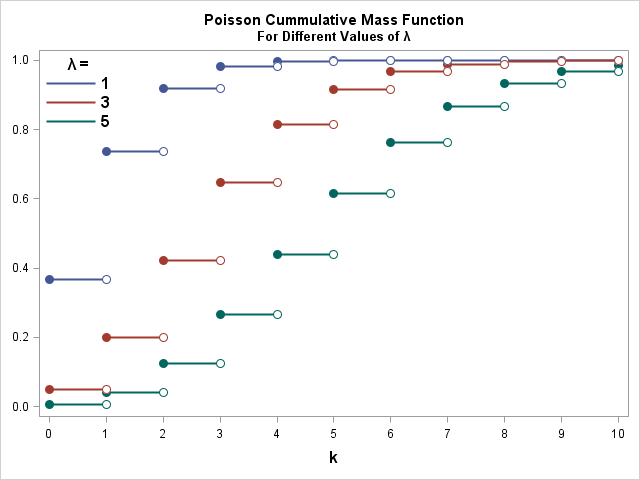![]()
![]()
If a random variable ![]()
![]()
![]()
![]()
![]()
![]()
![]()
![]()
![]()
![]()
To the right, I plot the Probability Mass Function (PMF) and the corresponding Cumulative Mass Function (CMF). I do so for three different Poisson distributions with parameters ![]()
![]()
![]()
![]()
![]()
![]()
The Poisson distribution expresses the probability that a given count of events will occur in a given time period, given that these events usually occur with a known constant average rate. Given that you though a whole 24-hour day receive three E-mails per hour on average. What is the probability that in the next hour, you will receive seven E-Mails? This is the question that the Poisson answers. Here, we would set ![]()
![]()
![]()
![]()




Poisson Distribution Example SAS Code
It is important to know the shape of the distribution you are working with. Therefore, I have written a small sample code below to play around with the Poisson. Set ![]()
![]()
![]()
![]()
![]()
![]()
![]()
%let lambda=4; data Poisson_PMF; do k=0 to 10; PMF=pdf('Poisson', k, &lambda); output; end; run; title "Poisson Probability Mass Function."; title2 "For (*ESC*){unicode lambda} = &lambda."; proc sgplot data=Poisson_PMF noautolegend; vbar k / response=PMF barwidth=0.5 legendlabel="PMF"; keylegend / location=inside position=NE across=1; yaxis display=(nolabel); run; title; |
In conclusion, The Poisson distribution is popular due to its simplicity, but for the same reason, we need some distribution, that can grasp that the mean and variance are not equal. Working with count data you will often see a pattern where the variance is greater than the mean. Consequently, you should familiarize yourself with the Negative Binomial Distribution, which is a natural extension and does not assume equal mean and variance. Finally, I have written about how to fit a Poisson distribution to univariate data in the blog post Fit Discrete Distribution in SAS.
